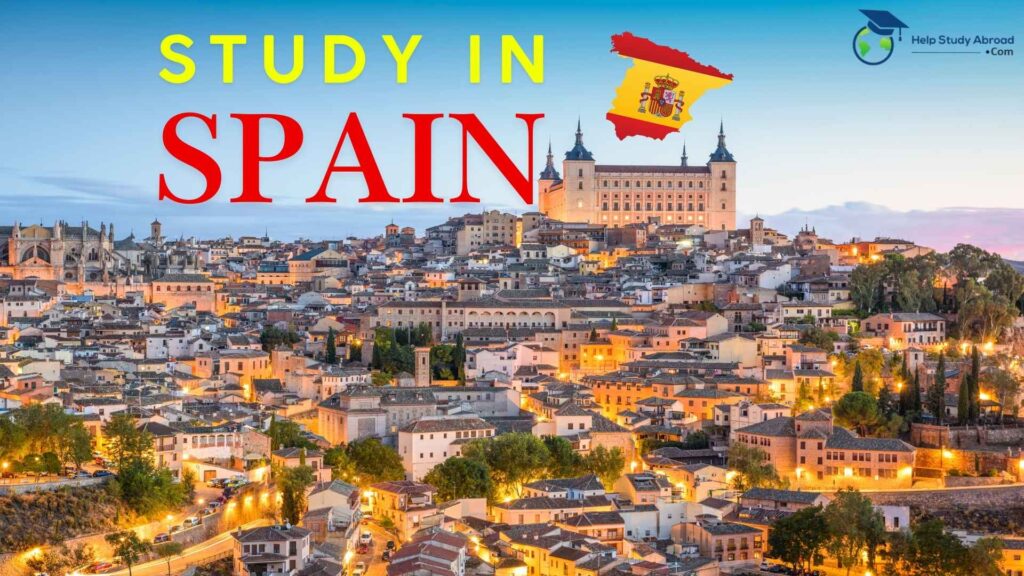Living Cost in Italy for International Students 2025
Italy, known for its awesome history, culture, and schools, is super popular with students worldwide. If you’re thinking of studying there, knowing the living cost in Italy is key to planning your finances. For 2025, you’ll need to budget for different expenses, which can change based on the city you choose and your lifestyle. This guide will help you figure out your budget so you can enjoy your study abroad adventure!
Why Understand Living Costs Before Moving to Italy?
Trust me, figuring out the living cost in Italy beforehand is a must for international students. It helps make sure you have a smooth and stable experience, money-wise. If you plan well, you can chill out and focus on your studies. Plus, it can help you find scholarships and other ways to get help with costs. All in all, planning makes things way easier!
- Better Budget Management: Helps you allocate funds wisely.
- Avoid Financial Stress: Prevents unexpected monetary issues.
- Smooth Transition and Comfort: Ensures you settle in without financial worries.
- Knowing Financial Aid and Scholarship Opportunities: Allows you to explore funding options.
Talk to Our Study Abroad Experts!
Major Factors Affecting Living Cost in Italy
Lots of things can change the living cost in Italy for international students. Where you live (city or countryside), what kind of place you stay in (dorms or your own apartment), how you like to spend your time, if you work part-time, and even the exchange rates all play a part. Thinking about these things helps you make a budget that fits what you need.
- Location: Urban vs. Rural Areas: Big cities like Rome and Milan are pricier. According to a study by the Italian National Institute of Statistics (ISTAT), Milan is approximately 30% more expensive than smaller towns [1].
- Accommodation Type: On-Campus vs. Off-Campus: On-campus dorms are generally cheaper. On the other hand, rental prices have increased by 5-7% in the past year due to high demand and tourism [2].
- Lifestyle Choices: Personal spending habits: Dining out and entertainment significantly impact expenses. According to a survey by Erasmusu, students who cook at home spend about 40% less on food [3].
- Part-Time Work Opportunities: Earning while studying: Italy allows international students to work part-time, providing an income source. The average hourly wage for student jobs ranges from €8 to €12.
- Currency Exchange Rates: Impact on expenses: Fluctuations affect the real cost of living. For instance, a 5% change in the exchange rate can alter your monthly budget by hundreds of dollars.
Cost of Living in Major Cities of Italy
The cost of living in Italy can be really different depending on where you are. Big student cities like Rome, Milan, Florence, and Bologna usually cost more than places like Naples or Turin. Here’s a table that shows the average monthly costs in some main cities, so you can get an idea. Planning to study in Italy? Check out our Italy Student Visa for Indian Students: Comprehensive Step-by-Step Guide for 2025 to help with your application process.
| City | Accommodation (USD) | Food (USD) | Transport (USD) | Utilities (USD) | Total (USD) |
|---|---|---|---|---|---|
| Rome | 700 – 1200 | 300 – 500 | 50 – 100 | 100 – 200 | 1150 – 2000 |
| Milan | 800 – 1500 | 400 – 600 | 70 – 120 | 120 – 250 | 1390 – 2470 |
| Florence | 600 – 1100 | 300 – 500 | 50 – 100 | 80 – 150 | 1030 – 1850 |
| Bologna | 500 – 1000 | 250 – 450 | 40 – 80 | 70 – 130 | 860 – 1660 |
| Naples | 400 – 800 | 200 – 400 | 30 – 60 | 60 – 120 | 690 – 1380 |
| Turin | 450 – 900 | 220 – 420 | 35 – 70 | 65 – 125 | 770 – 1515 |
Get Customized Budget Planning Assistance!
Accommodation Expenses for International Students
Where you stay makes up a big chunk of the living cost in Italy. You can choose from on-campus dorms, shared apartments, or your own studio. Each one has different perks and prices. Dorms on campus are usually the cheapest. Shared apartments can be a good middle ground between cost and hanging out with people. For affordable options, consider checking out Top 20 Affordable Universities in Italy for International Students, as they often have cheaper accommodation solutions.
| Accommodation Type | Average Monthly Cost (USD) | Facilities |
|---|---|---|
| On-Campus Dormitories | 300 – 600 | Furnished room, shared kitchen, laundry facilities, internet access |
| Shared Apartments | 400 – 800 | Furnished room, shared kitchen, shared bathroom, internet access |
| Private Studios | 700 – 1200 | Furnished studio, private kitchen, private bathroom, internet access |
Food and Grocery Expenses in Italy
What you eat is another big part of the living cost in Italy. Whether you cook or eat out a lot really changes things. Making your own meals is cheaper than hitting up restaurants all the time. Local markets and supermarkets have lots of affordable choices.
| Expense Type | Average Monthly Cost (USD) | Notes |
|---|---|---|
| Groceries | 200 – 400 | Includes basic food items from supermarkets |
| Eating Out | 100 – 300 | Occasional meals at restaurants or pizzerias |
| Total | 300 – 700 | Combined cost of groceries and eating out |
Transportation Costs for Students in Italy
Italy has great public transport, so getting around is easy. Getting a monthly or yearly pass can really save you money. Plus, lots of cities give student discounts on buses and trains.
| Transportation Type | Average Monthly Cost (USD) | Notes |
|---|---|---|
| Public Transport Pass | 30 – 70 | Covers buses, trams, and metros |
| Bicycle Rental | 20 – 50 | Alternative for short distances |
| Taxi/Ride-Sharing | 50 – 100 | For occasional use |
Healthcare and Insurance Costs
Don’t forget about healthcare! Italy wants students to have health insurance. You can use the public system, but private insurance gives you more options. Be sure to budget for insurance and any doctor visits you might need.
| Type of Expense | Average Annual Cost (USD) | Notes |
|---|---|---|
| Public Health Insurance | 150 – 300 | Basic coverage |
| Private Health Insurance | 500 – 1000 | Comprehensive coverage |
| Medical Expenses | 100 – 300 (variable) | For occasional doctor visits and prescriptions |
Miscellaneous Expenses to Consider
Besides the big stuff, students should also think about other costs. This includes fun stuff, personal care, phone and internet, and school supplies. All these little things can add up, so it’s good to plan for them. If you are struggling to manage your expenses, consider exploring How to Study in Italy with Scholarships: A Complete Guide for International Students to ease your financial burden.
- Entertainment and Leisure: $50 – $100 per month
- Personal Care and Hygiene: $20 – $50 per month
- Internet and Mobile Bills: $30 – $60 per month
- Study Materials: $50 – $100 per semester
Part-Time Job Opportunities for Students
Italy lets international students work part-time, which is a great way to help pay for things. Students often tutor, work in cafes, or help out at their university. Knowing how much you could earn can help you plan your finances.
| Job Type | Average Hourly Wage (USD) | Average Monthly Earnings (USD) |
|---|---|---|
| Tutoring | 10 – 15 | 200 – 400 |
| Cafe/Restaurant Work | 8 – 12 | 150 – 300 |
| University Assistant | 9 – 13 | 180 – 350 |
Suggested Readings
Want to know more? Check out these articles for more tips on studying abroad: Make sure to choose the right course by consulting Your Ultimate Guide to Choosing the Right Masters Courses in Italy Universities.
- Your Comprehensive Guide to Studying in Italy: Admissions, Costs, and Culture
- How to Study in Italy with Scholarships: A Complete Guide for International Students
- Italy Student Visa for Indian Students: Comprehensive Step-by-Step Guide for 2025
- Top 20 Affordable Universities in Italy for International Students
- Your Ultimate Guide to Choosing the Right Masters Courses in Italy Universities
FAQs – Living Cost in Italy for International Students
1. What is the average cost of living for a student in Italy?
So, what’s the damage? The average cost ranges from $1,000 to $2,000 per month, give or take, depending on the city and how you roll. This covers your place, food, getting around, and personal stuff. Keep in mind living expenses in Rome might be steeper.
2. Are there affordable accommodation options for international students?
Yep, for sure! Dorms on campus and sharing an apartment are your best bets for keeping costs down. You’re looking at around $300 to $800 a month for those. You can also get the inside scoop on student accommodation cost in Italy by hitting up the universities directly.
3. How much does food cost on average per month?
Okay, food-wise, you’re probably looking at $300 to $700 a month. It really depends if you’re cooking at home or eating out all the time. Hitting up local markets can save you a bunch. Heads up that the rent and food cost in Milan is gonna be higher than average.
4. Can international students work part-time to cover expenses?
Totally! International students can work up to 20 hours a week. Lots of folks tutor or work in cafes, making anywhere from $150 to $400 a month. That can really help with your monthly budget in Naples or wherever you end up.
5. Is public transportation affordable in major cities?
Yeah, getting around is pretty cheap. A monthly pass is usually around $30 to $70. And a lot of cities give student discounts, which is awesome. Super useful if you’re thinking about those living expenses in Rome.
6. How much should I budget for healthcare and insurance?
For health stuff, budget around $150 to $1,000 each year. It depends if you go for public or private insurance. Private gives you more coverage, though. And remember, your budget might change when you look at affordable living in Florence.
7. What are the most affordable cities to study in Italy?
If you’re on a budget, Naples and Turin are generally easier on the wallet than Rome, Milan, or Florence. You’ll find cheaper places to live and lower costs in general. Students can totally enjoy cheap cities to live in Italy.
8. How can I reduce my living expenses while studying abroad?
Cook your own food, use the buses and trains, hunt for student discounts, and maybe share a place. And check out free events around town! Making smart choices can really cut down on the overall cost of living in Italy.
9. Are there any student discounts on public transport?
For sure! Many cities in Italy offer discounts for students on public transport. Check with your school or the local transport for the lowdown. Those discounts really help if you’re dealing with the rent and food cost in Milan.



